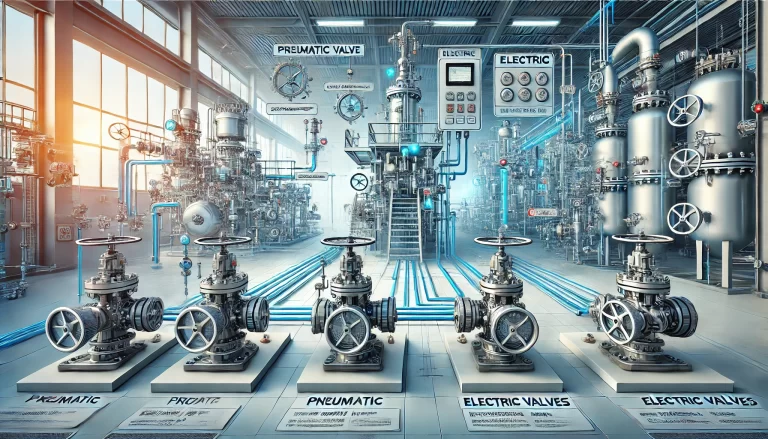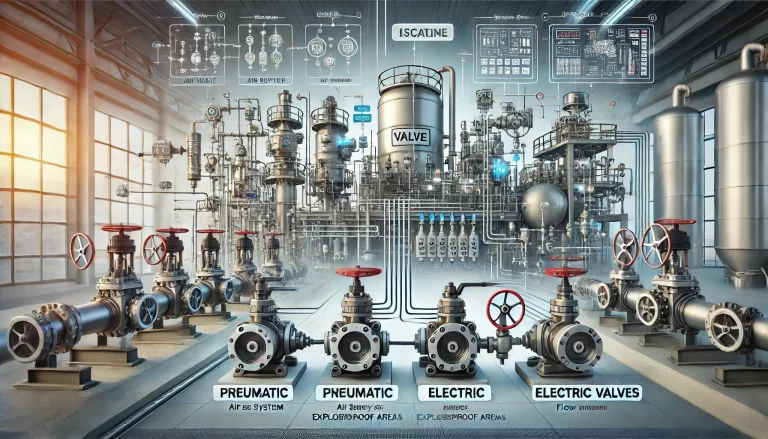1. Introduction: What is Control Valve Preventive Maintenance?
Control valve preventive maintenance (PM) refers to the systematic and scheduled servicing of control valves to prevent failures, ensure reliability, and maintain optimal performance. It involves inspecting, cleaning, lubricating, calibrating, and testing all critical components of the valve assembly on a routine basis.
2. Key Benefits of Preventive Maintenance
Early Detection of Issues:
Regular inspections help identify wear, corrosion, leakage, or mechanical failure before they cause system downtime.Extended Equipment Life:
Proper lubrication of moving parts—such as stems, bearings, and packing—reduces friction and wear.Improved Control Accuracy:
Calibration ensures the valve accurately responds to control signals, enhancing process stability and product quality.Contamination Control:
Internal cleaning removes debris or deposits from trim components like plugs, seats, and cages that could impair function.

3. Safety Precautions Before Maintenance
Before initiating any PM work on a control valve:
Ensure the ESD loop is overridden via the Manual Override Switch (MOS).
Isolate the valve using lockout/tagout (LOTO) procedures.
Depressurize the connected process lines and release stored energy.
Wear appropriate PPE (e.g., safety goggles, gloves, flame-resistant clothing).
Verify the correct valve based on tag numbers and process documentation.
Obtain a valid work permit and follow site-specific safety protocols.
4. Maintenance Checklist
4.1. Actuator Inspection
Exterior Condition:
Check the casing for cracks, corrosion, or paint degradation. Confirm all fasteners are tight.Stem Assessment:
Inspect for rust, scoring, or bending. Replace if damage affects alignment or movement.Diaphragm:
Look for wear, cracking, or air leakage. Replace damaged diaphragms immediately.Spring and Air Supply:
Check for deformation or corrosion. Ensure air lines, regulators, and filters function correctly.Manual Override & Locking Mechanism:
Verify operation to prevent unintended valve movement.Lubrication:
Follow manufacturer guidelines to lubricate specified points using appropriate grease or oil.

4.2. Valve Positioner
Mounting and Alignment:
Ensure the positioner is firmly attached and aligned with the actuator stem.Pneumatic Connections:
Check for air leaks and confirm proper input/output pressure.Electrical Wiring:
Inspect terminals and connectors for corrosion, looseness, or damage.Signal Calibration:
Validate signal accuracy and feedback alignment. Adjust as necessary.
4.3. Stem Connector and Feedback Linkage
Connector Integrity:
Examine for cracks, deformation, or excessive wear.Linkage Condition:
Confirm free, smooth movement over the full valve stroke. Compare physical position with positioner feedback.Lubrication:
Lubricate connecting joints per manufacturer recommendations.
4.4. Packing and Gland Assembly
Leak Check:
Pressurize the system and inspect the packing area for visible leaks or moisture.Material Condition:
Check for signs of hardening, fraying, or chemical degradation. Replace if necessary.Torque Adjustment:
Adjust gland follower to compress packing adequately without restricting stem movement.Lubrication (if required):
Some packing materials require lubrication—refer to OEM instructions.

4.5. Bonnet and Body Assembly
Surface Inspection:
Look for rust, cracks, or physical damage on the bonnet and body.Fastener Tightness:
Verify bolts and studs are secure, using correct torque values.Gasket Check:
Ensure body-to-bonnet gaskets show no signs of leakage or deterioration.
4.6. Internal Trim: Plug, Seat, and Cage
Wear and Damage:
Inspect seats, plugs, cages, and guides for erosion, pitting, or deformation.Alignment and Fit:
Confirm tight sealing and correct alignment of trim components.Material Compatibility:
Ensure materials are suitable for the process medium and temperature range.
4.7. Functional Testing
Stroke Test:
Move the valve through its full range. Look for delays, stickiness, or abnormal resistance.Response Time:
Use step inputs to measure how quickly the valve reaches its new setpoint.Leak Testing:
Check for both external and internal leakage, particularly around the seat.Control Accuracy:
Match control signals with valve feedback to validate performance.

5. Calibration of the Valve and Accessories
Positioner Calibration:
Adjust zero/span settings to synchronize control signal with valve position.Solenoid Valve Testing:
Energize/de-energize to confirm reliable switching and pneumatic signal transmission.Volume Booster and Quick Exhaust Valve:
Check for correct amplification and venting behavior.Air Supply Regulator:
Ensure pressure output is stable and within specification.
6. Documentation and Records
Record all inspections, repairs, calibration dates, and parts replaced.
Maintain a maintenance logbook or digital CMMS entry.
Use historical data to predict future maintenance needs and optimize inspection intervals.
7. Post-Maintenance Procedures
Clean and store tools and equipment properly.
Restore air supply and system pressure after isolation is cleared.
Reset control signals and remove MOS override.
Verify valve performance before returning to service.
Close and archive the work permit documentation.

8. Suggested Preventive Maintenance Frequency Table
| Component | Suggested Frequency | Action Items Summary |
|---|---|---|
| Valve Positioner | Semi-Annually | Signal calibration, leak check |
| Actuator Diaphragm | Annually | Crack inspection, flexibility check |
| Stem and Packing | Quarterly | Leak test, torque adjustment |
| Trim Components (Plug/Seat/Cage) | Every Shutdown | Wear and erosion inspection, replacement |
| Air Supply System | Monthly | Filter clean/replacement, regulator check |
| Solenoid & Boosters | Annually | Response test, electrical connection check |
